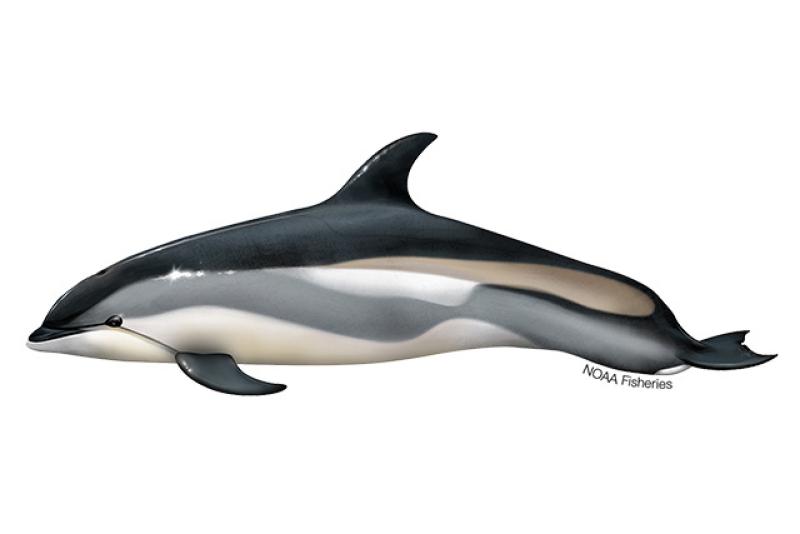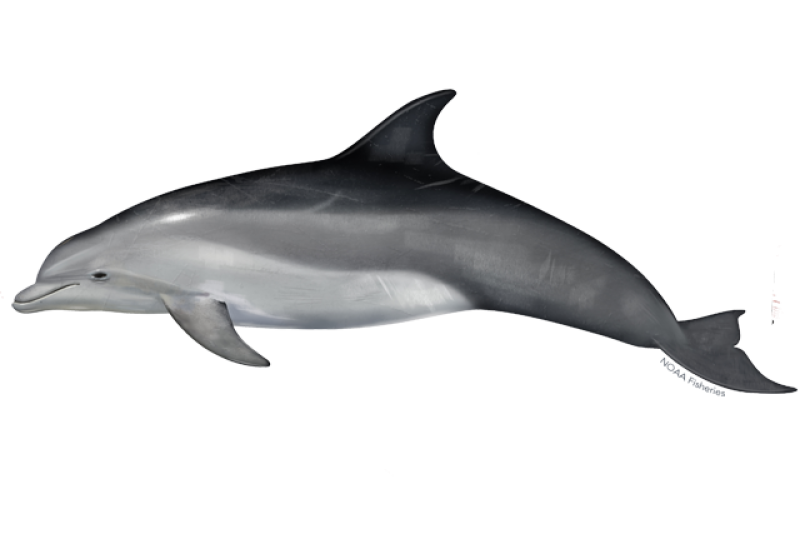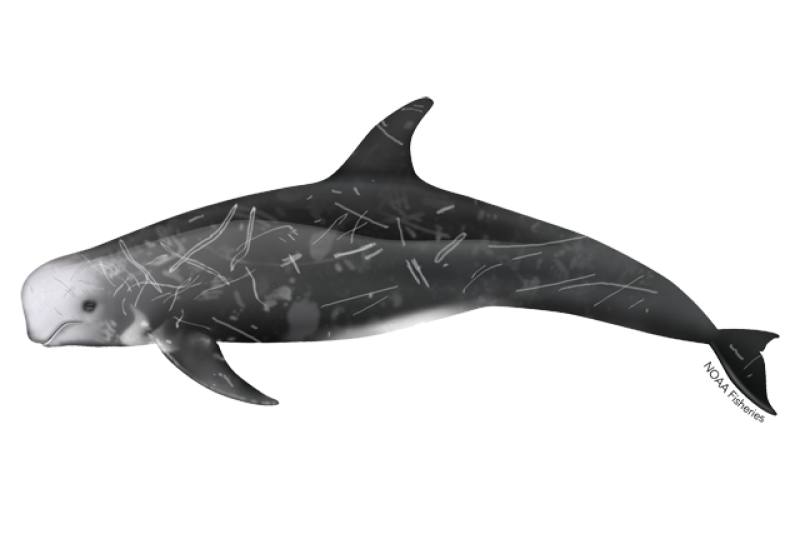White-Beaked Dolphin
Lagenorhynchus albirostris

Protected Status
Quick Facts
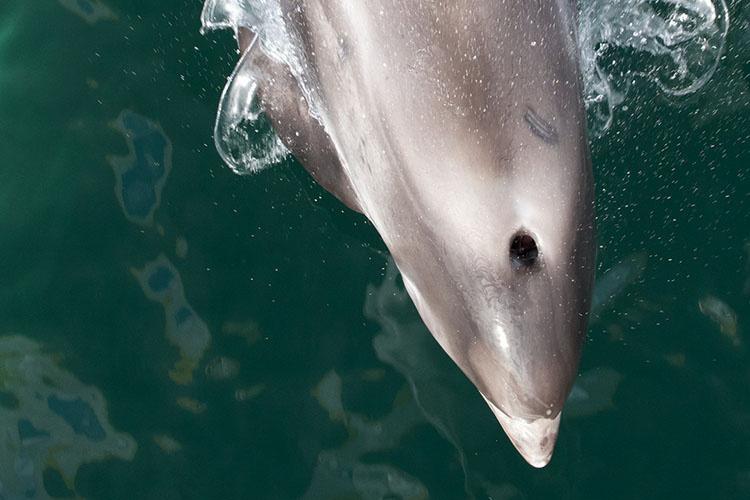 White-beaked Dolphin. Credit: Brian Gratwicke (CC BY 2.0)
White-beaked Dolphin. Credit: Brian Gratwicke (CC BY 2.0)
White-beaked Dolphin. Credit: Brian Gratwicke (CC BY 2.0)
About the Species
 White-beaked Dolphin. Credit: Brian Gratwicke (CC BY 2.0)
White-beaked Dolphin. Credit: Brian Gratwicke (CC BY 2.0)
White-beaked Dolphin. Credit: Brian Gratwicke (CC BY 2.0)
White-beaked dolphins are found throughout the cold waters of the North Atlantic Ocean. They are active swimmers and often “surf” the waves created by vessels. They are usually found in groups of five to 30 individuals but sometimes travel in groups of up to 1,500.
White-beaked dolphins hunt for food both near the water’s surface and along the ocean bottom. Some fishermen in Canada call these dolphins “squidhounds” because they eat squid and octopi.
White-beaked dolphins, like all marine mammals, are protected under the Marine Mammal Protection Act. NOAA Fisheries and its partners are working to conserve white-beaked dolphins and advance our understanding of this species through research and conservation activities.
Population Status
NOAA Fisheries estimates population size in its stock assessment reports.
The worldwide population of white-beaked dolphins is unknown.
White-beaked dolphins in U.S. waters are part of the western North Atlantic stock . Based on recent surveys, our scientists estimate that there are about 2,000 dolphins in this stock.
Appearance
White-beaked dolphins are about 8 to 10.5 feet long and weigh about 395 to 770 pounds. Males are usually larger than females. Both males and females have a streamlined, robust body with a small beak and a large, tall, curved dorsal fin. Their body is mostly dark gray or black on the upper sides and back with light gray or white patches on their sides, back, and underside. The dorsal fin, flippers, and flukes are mostly dark. Their beaks, which are very short and thick, also have white “lips.” White-beaked dolphins have 22 to 28 pairs of small, cone-shaped teeth in each jaw.
Behavior and Diet
White-beaked dolphins usually travel in groups of five to 30 individuals but are sometimes found in groups of up to 1,500 individuals. These groups can be organized by age and sex. White-beaked dolphins are sometimes seen in groups with other species, such as fin whales, humpback whales, sei whales and other small dolphins such as bottlenose, short-beaked common dolphins, Risso’s dolphins and Atlantic white-sided dolphins. Cooperative feeding has been observed.
White-beaked dolphins are active swimmers. They often breach and jump at the water’s surface and will sometimes "surf" the waves created by vessels.
White-beaked dolphins eat schooling fish (e.g., haddock, hakes, cod, herring and whiting), crustaceans (e.g., shrimp and crabs), and cephalopods (e.g., squid and octopi). They typically work together to catch fish at the water’s surface but will also feed along the ocean bottom.
Where They Live
White-beaked dolphins are found in colder temperate and subpolar waters throughout the North Atlantic Ocean. Their range includes the waters of eastern North America (Massachusetts to Newfoundland), northern Europe (north of Portugal), Scandinavia, Greenland, the United Kingdom, and the Barents Sea. Their distribution in U.S. waters is limited. They prefer waters less than 650 feet deep.
The distribution of this species varies with the seasons. Most white-beaked dolphins move south and farther offshore during the winter months. They then return north and closer to shore once the ice recedes during the warmer summer months.
Lifespan & Reproduction
The estimated lifespan of white-beaked dolphins is unknown. They reach sexual maturity when they are seven to 12 years old. Females are pregnant for about 11 months and give birth to a single calf, usually between May and September. Calves are about 3.6 to 4 feet long and weigh about 88.2 pounds at birth.
Threats
Entanglement
One of the main threats to white-beaked dolphins is becoming entangled or captured in commercial fishing gear such as gillnets, cod traps, and trawl nets. These interactions can cause dolphins to be injured or killed.
Hunting
White-beaked dolphins are sometimes targeted and hunted for meat and oil in waters off Canada (Labrador and Newfoundland), Greenland, Iceland, and Norway.
Ocean Noise
White-beaked dolphins rely on sound to communicate and echolocate. Noise interference from vessels, as well as industrial and military activities, disturbs white-beaked dolphins’ feeding, communication, and orientation. Increasing evidence suggests that exposure to intense underwater sound in some settings may cause some dolphins to strand and ultimately die. If loud enough, noise can cause temporary or permanent hearing loss.
Scientific Classification
| Kingdom | Animalia | Phylum | Chordata | Class | Mammalia | Order | Cetacea | Family | Delphinidae | Genus | Lagenorhynchus | Species | albirostris |
|---|
Last updated by NOAA Fisheries on 03/05/2025
What We Do
Conservation & Management
NOAA Fisheries is committed to the protection of white-beaked dolphins. Targeted management actions taken to secure protections for these dolphins include:
- Overseeing marine mammal health and stranding response
- Addressing ocean noise
- Educating the public about white-beaked dolphins and the threats they face
Science
Our research projects have discovered new aspects of white-beaked dolphin biology, behavior, and ecology and helped us better understand the challenges that all white-beaked dolphins face. Our work includes:
- Stock assessments
- Monitoring population abundance and distribution
How You Can Help
Don't Feed Wild Dolphins
Dolphins fed by humans lose their natural wariness and learn to associate people with food, causing them to beg for handouts and take bait and catch directly from fishing gear. This puts them at risk from vessel strikes and becoming entangled in or ingesting fishing gear. Dolphins may teach these behaviors to their young, thereby putting them at risk.
More on protecting wild dolphins and admiring them from a distance
Keep Your Distance
Be responsible when viewing marine life in the wild. Observe all dolphins and porpoises from a safe distance of at least 50 yards and limit your time spent observing to 30 minutes or less.
Report Marine Life in Distress
Report a sick, injured, entangled, stranded, or dead animal to make sure professional responders and scientists know about it and can take appropriate action. Numerous organizations around the country are trained and ready to respond. Never approach or try to save an injured or entangled animal yourself—it can be dangerous to both the animal and you.
Learn who you should contact when you encounter a stranded or injured marine animal
Report a Violation
Call the NOAA Fisheries Enforcement Hotline at (800) 853-1964 to report a federal marine resource violation. This hotline is available 24 hours a day, 7 days a week for anyone in the United States.
You may also contact your closest NOAA Office of Law Enforcement field office during regular business hours.
Featured News
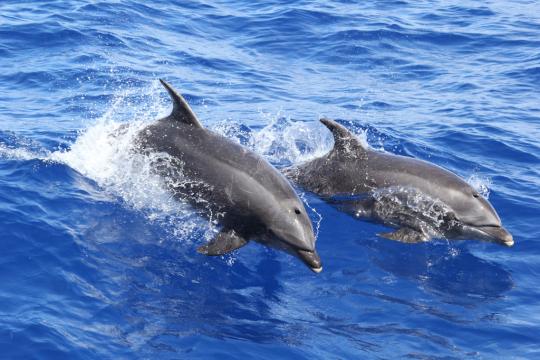 Pair of bottlenose dolphins. Credit: NOAA Pacific Islands Fisheries Science Center/Lisa Morse.
Pair of bottlenose dolphins. Credit: NOAA Pacific Islands Fisheries Science Center/Lisa Morse.
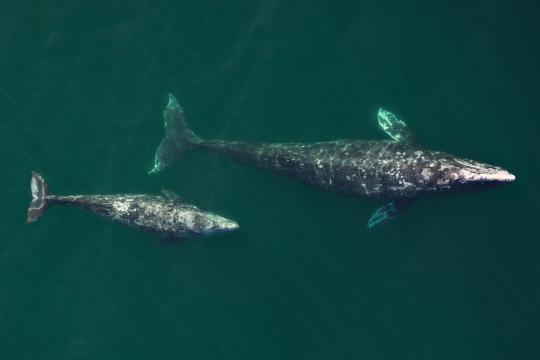 Gray whales were nearly hunted to extinction by commercial whaling. Protections under the MMPA, ESA, and the end of commercial whaling have allowed the species to recover. Credit: NOAA Fisheries (Permit #19091).
Gray whales were nearly hunted to extinction by commercial whaling. Protections under the MMPA, ESA, and the end of commercial whaling have allowed the species to recover. Credit: NOAA Fisheries (Permit #19091).
Celebrating 50 Years of the Marine Mammal Protection Act
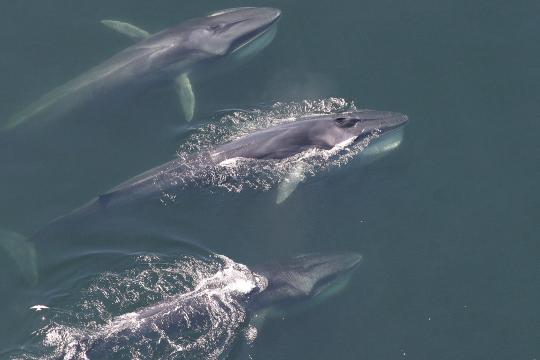 Finback whales. Credit: NOAA Fisheries
Finback whales. Credit: NOAA Fisheries
11 Cool Facts About Whales, Dolphins, and Porpoises
Management Overview
The white-beaked dolphin is protected throughout its range under the Marine Mammal Protection Act.
Additionally, the white-beaked dolphin is listed under:
Appendix II of the Convention on International Trade in Endangered Species of Wild Fauna and Flora (CITES)
Conservation Efforts
Overseeing Marine Mammal Health and Stranding Response
We work with volunteer networks in all coastal states to respond to marine mammal strandings including all dolphins and porpoises. When stranded animals are found alive, NOAA Fisheries and our partners assess the animal’s health and determine the best course of action. When stranded animals are found dead, our scientists work to understand and investigate the cause of death. Although the cause often remains unknown, scientists can sometimes attribute strandings to disease, harmful algal blooms, vessel strikes, fishing gear entanglements, pollution exposure, and underwater noise. Some strandings can serve as indicators of ocean health, giving insight into larger environmental issues that may also have implications for human health and welfare.
Learn more about the Marine Mammal Health and Stranding Response Program
Marine Mammal Unusual Mortality Events
White-beaked dolphins have never been part of a declared unusual mortality event. Under the Marine Mammal Protection Act, an unusual mortality event is defined as "a stranding that is unexpected; involves a significant die-off of any marine mammal population; and demands immediate response." To understand the health of marine mammal populations, scientists study unusual mortality events.
Get information on active and past UMEs
Get an overview of marine mammal UMEs
Addressing Ocean Noise
NOAA Fisheries is investigating all aspects of acoustic communication and hearing in marine animals, as well as the effects of sound on dolphin behavior and hearing. In 2018, we revised marine mammal acoustic technical guidance for assessing the effects of anthropogenic (human-caused) sound on marine mammals’ hearing.
Educating the Public
NOAA Fisheries aims to increase public awareness and support for white-beaked dolphin conservation through education, outreach, and public participation. We share information with the public about the status of white-beaked dolphins, as well as our research and efforts to promote their recovery.
Key Actions and Documents
Last updated by NOAA Fisheries on 03/05/2025
Science Overview
NOAA Fisheries conducts various research activities on the biology, behavior, and ecology of white-beaked dolphins. The results of this research are used to inform management decisions for this species.
Stock Assessments
Determining the size of white-beaked dolphin populations helps resource managers determine the success of conservation measures. Our scientists collect population information and present the data in annual stock assessment reports.
Monitoring Population Abundance and Distribution
Scientists observe white-beaked dolphins to record their numbers and distribution. By comparing numbers collected over multiple years, scientists can look for trends—e.g., whether the population is increasing, decreasing, or remaining stable during a given period.
More Information
Last updated by NOAA Fisheries on 03/05/2025
Outreach & Education
Dolphin Friendly Fishing Tips Sign
This sign is often posted near boat ramps, piers, docks, marinas, and waterfront parks.
Protect Wild Dolphins Sign
This sign is often posted near boat ramps, piers, docks, marinas, and waterfront parks.
Don't Feed Wild Dolphin Sign
This sign is often posted near boat ramps, piers, docks, marinas, and waterfront parks.
Last updated by NOAA Fisheries on 03/05/2025
